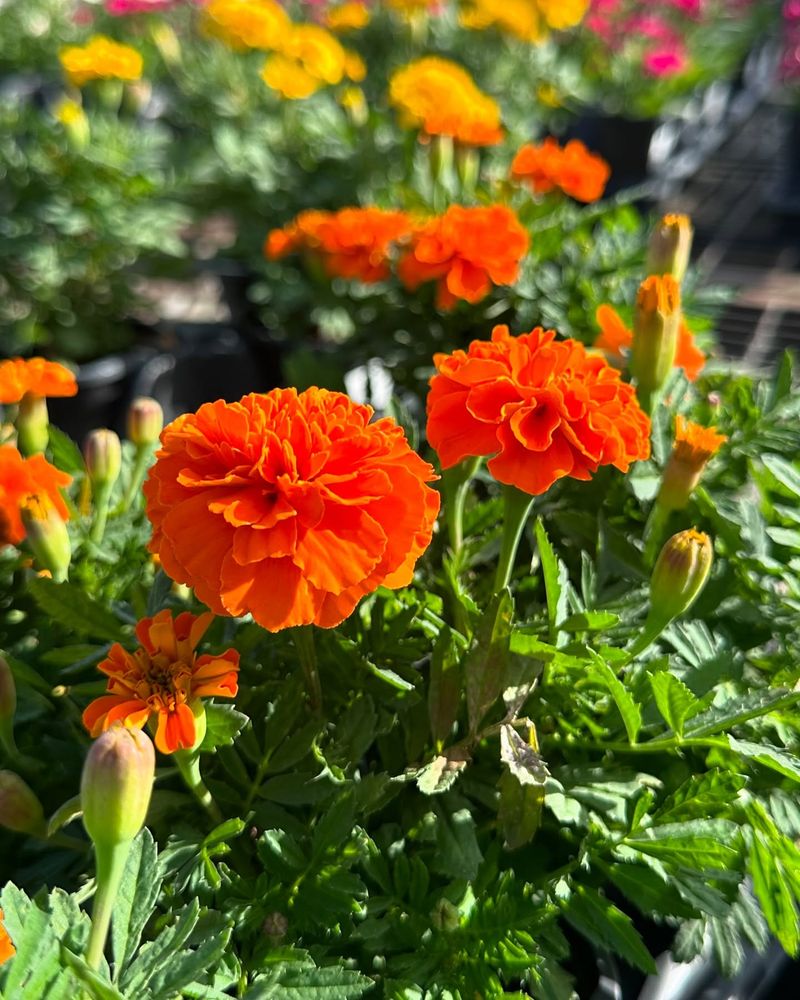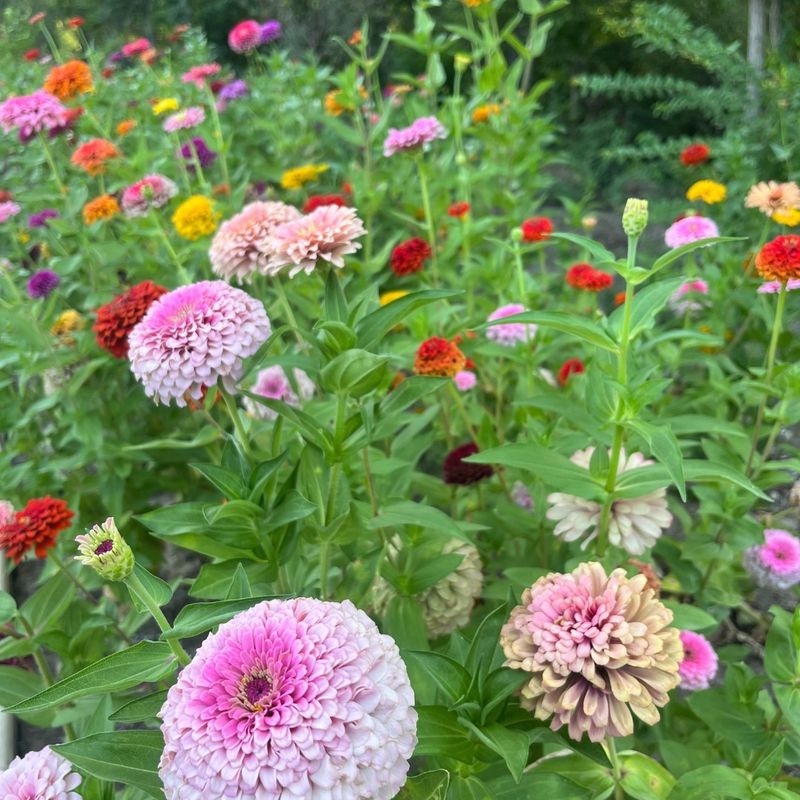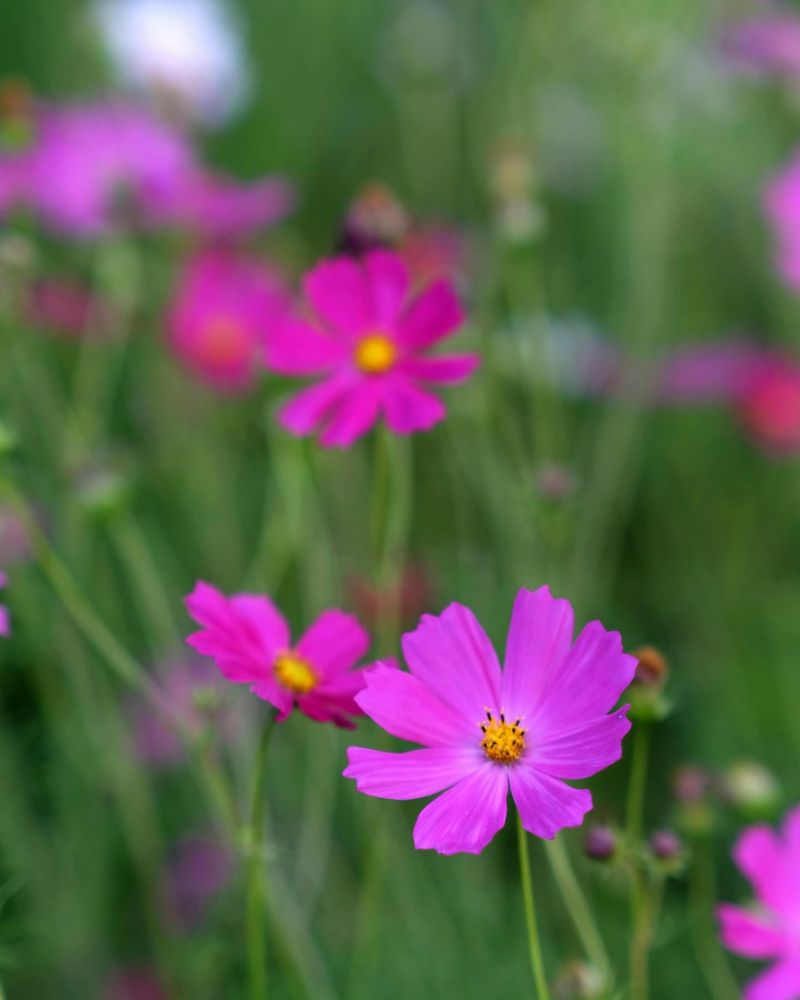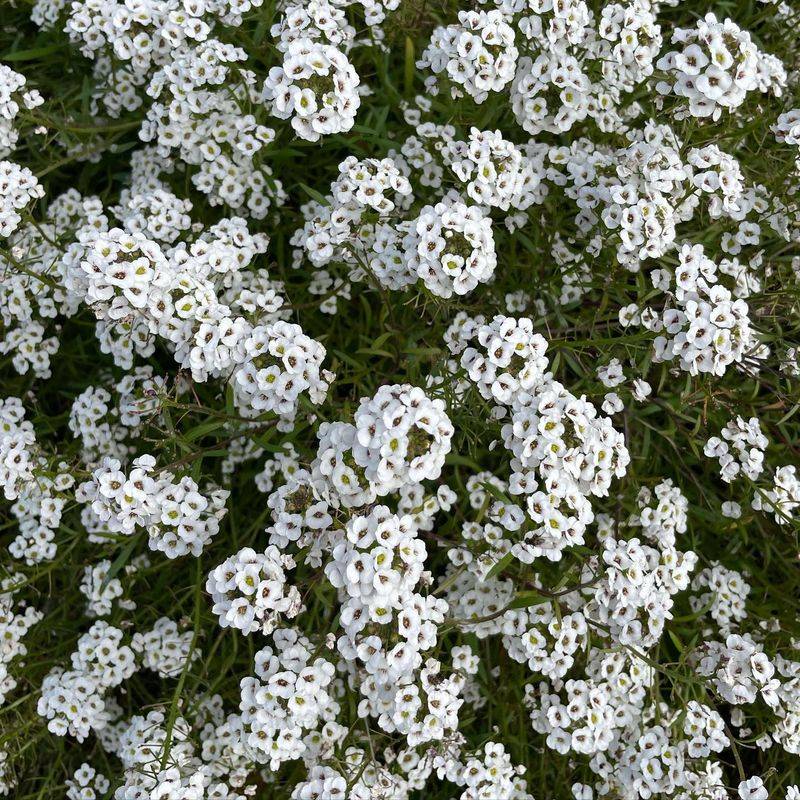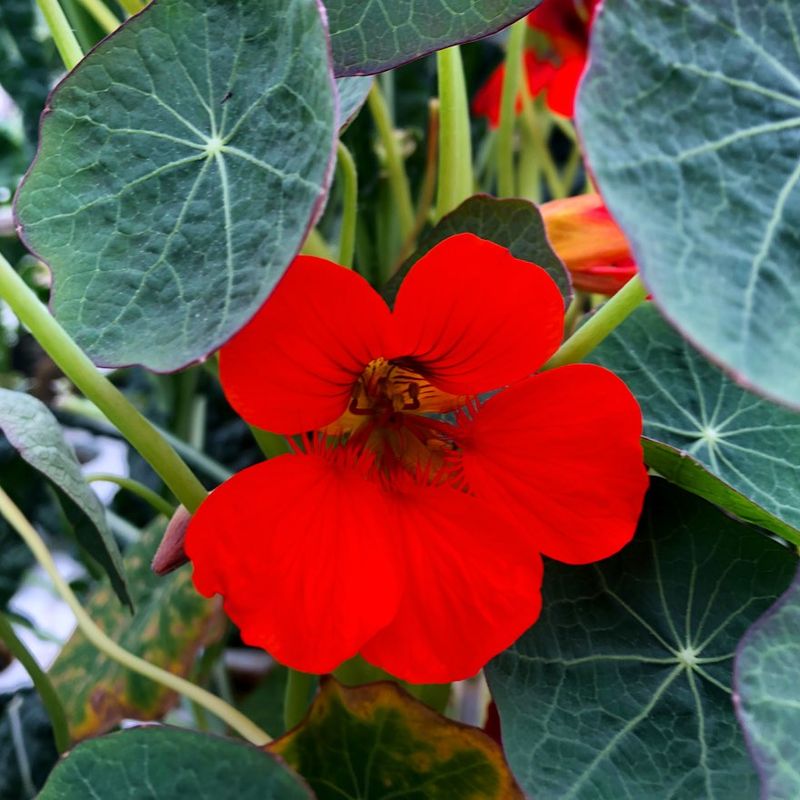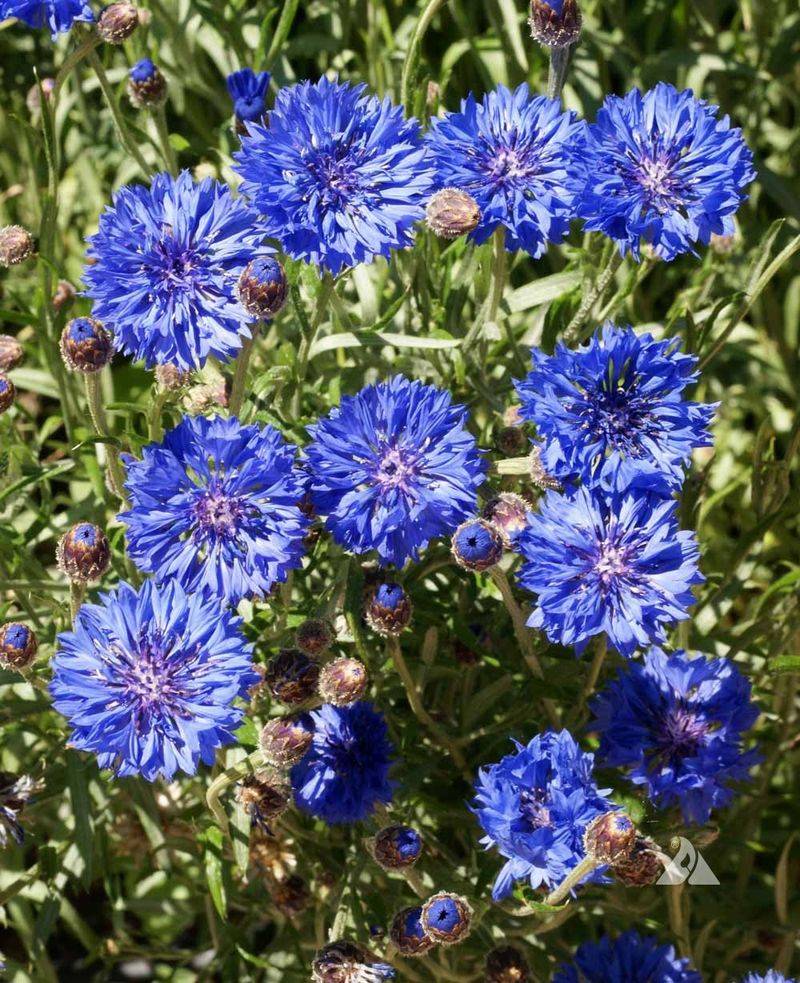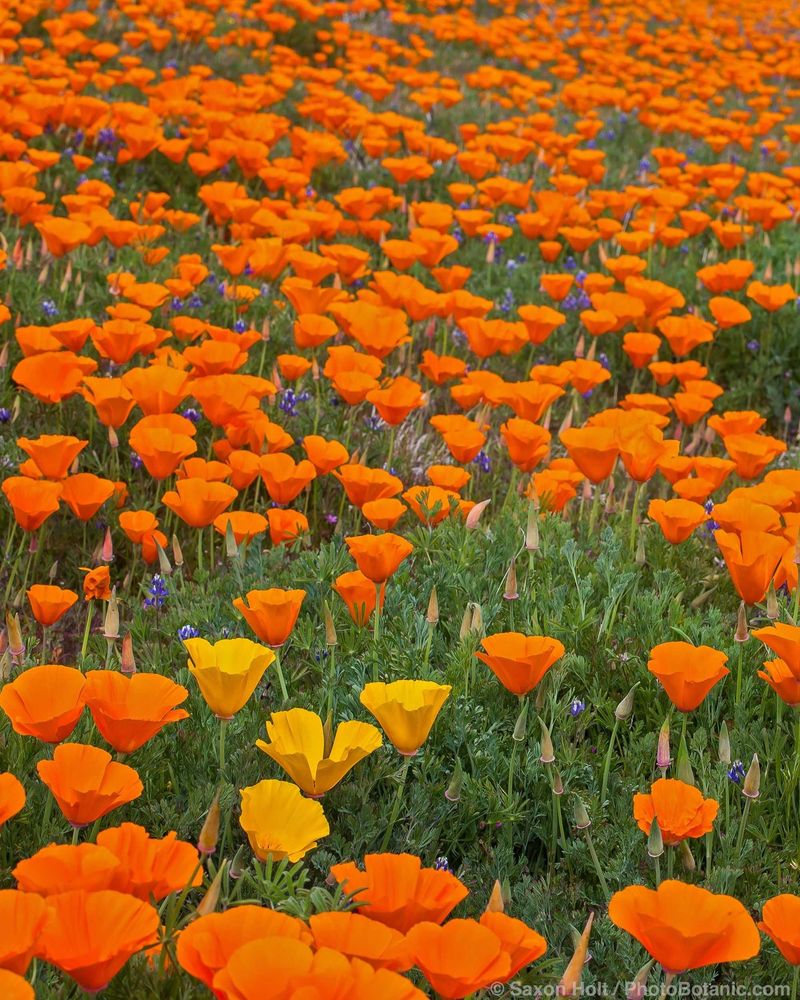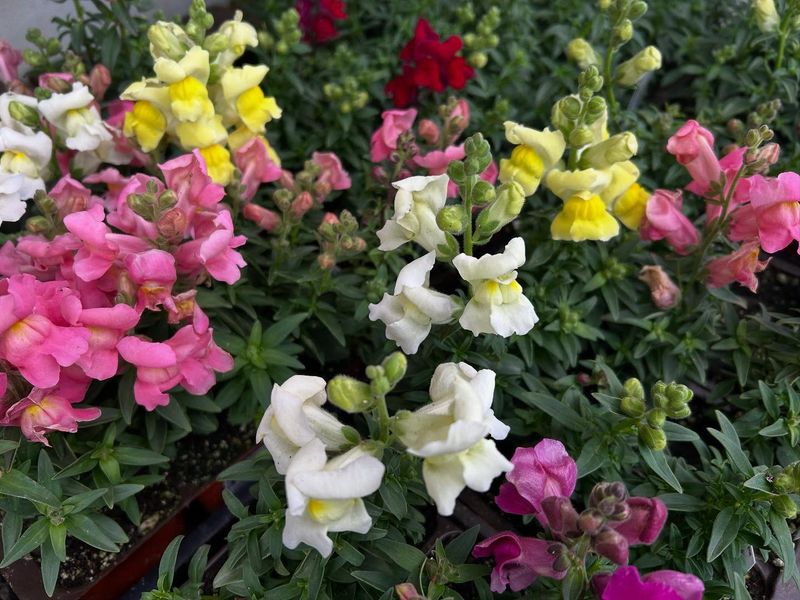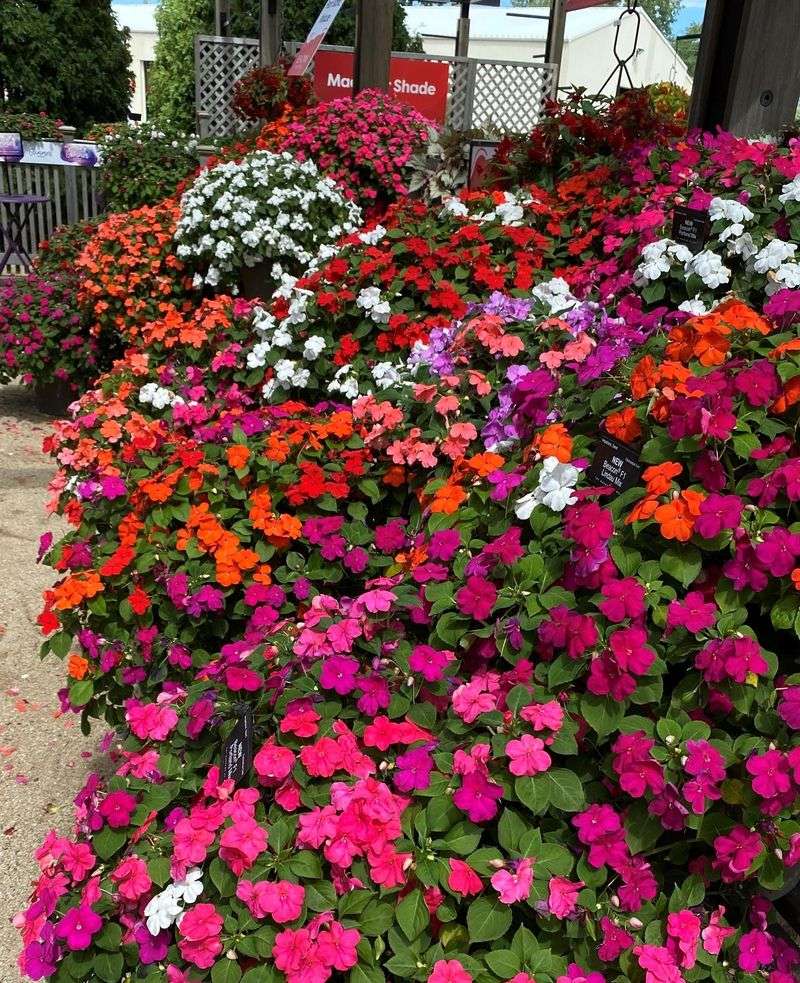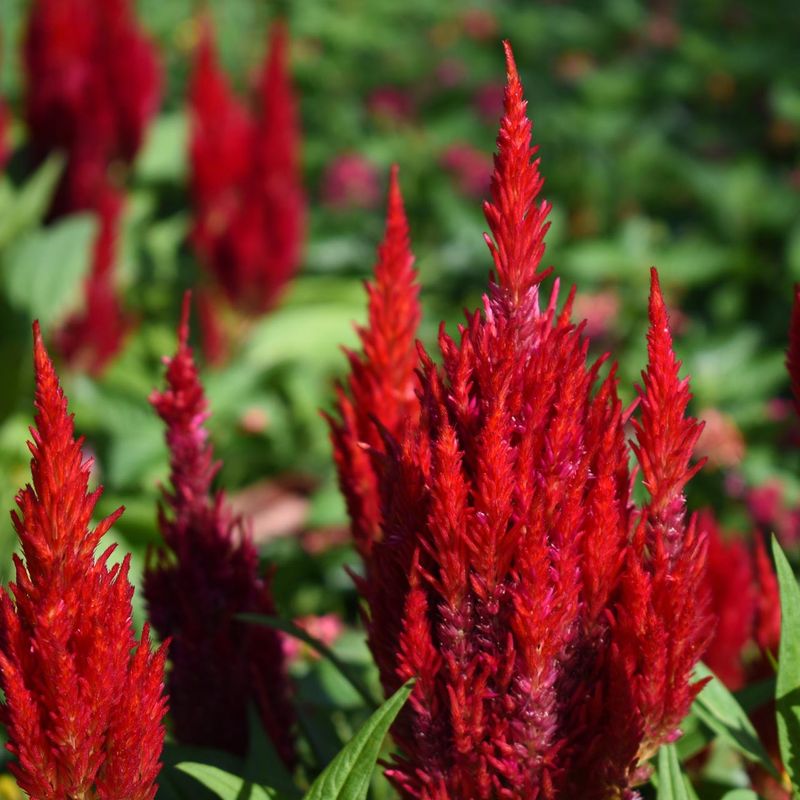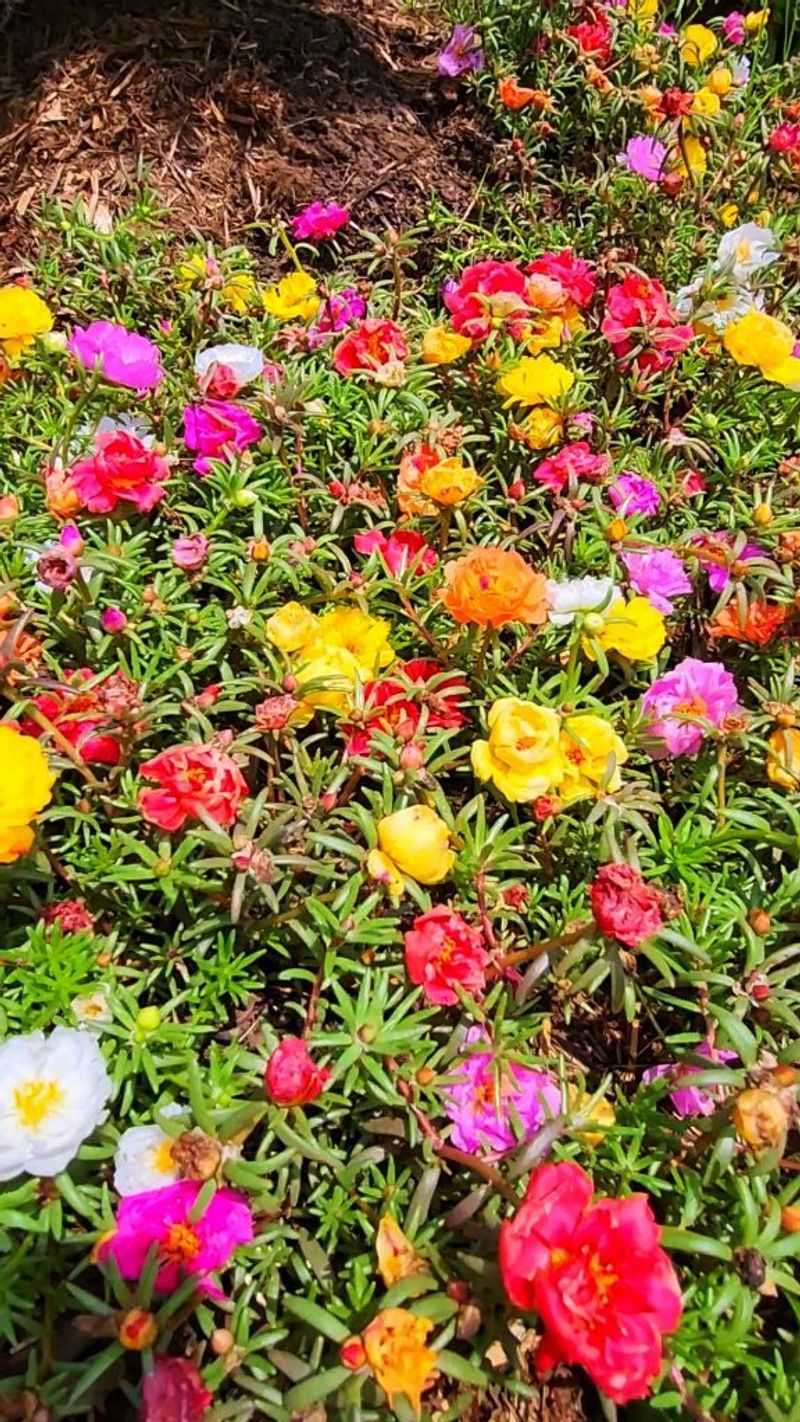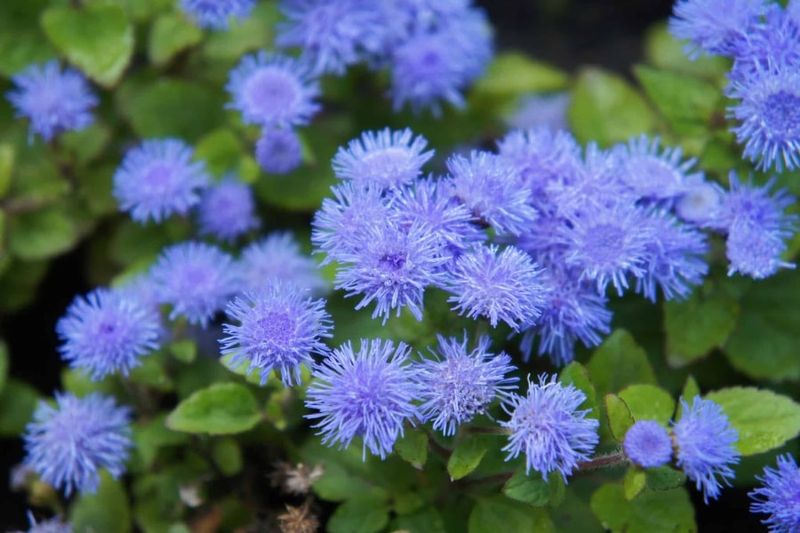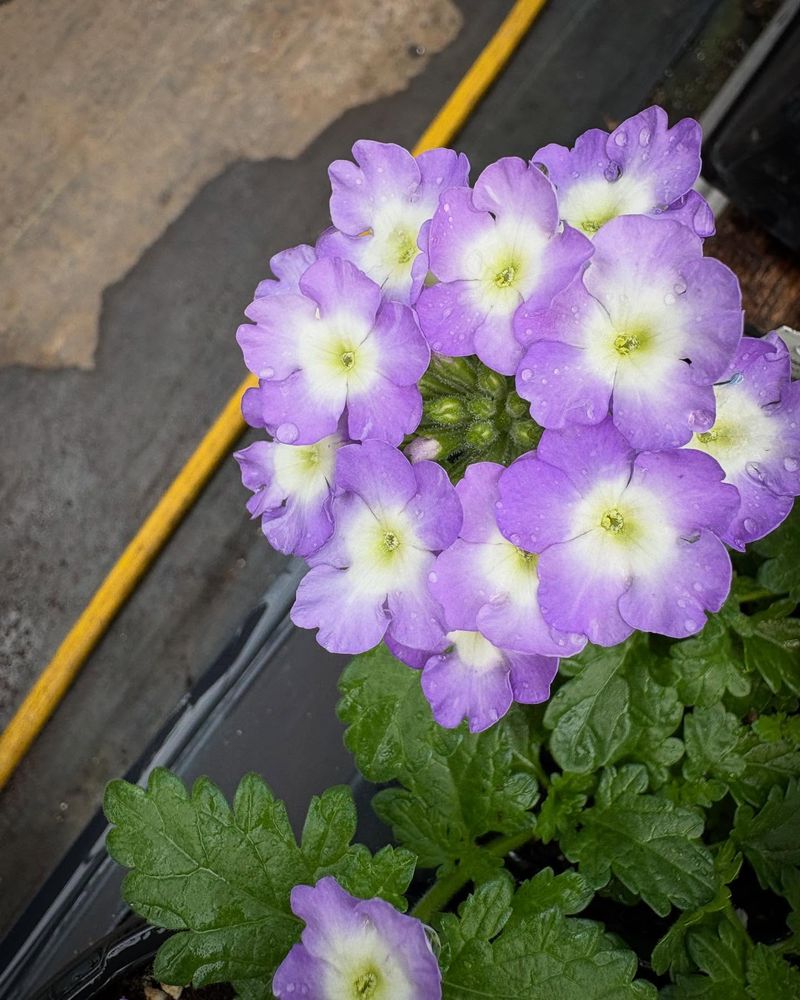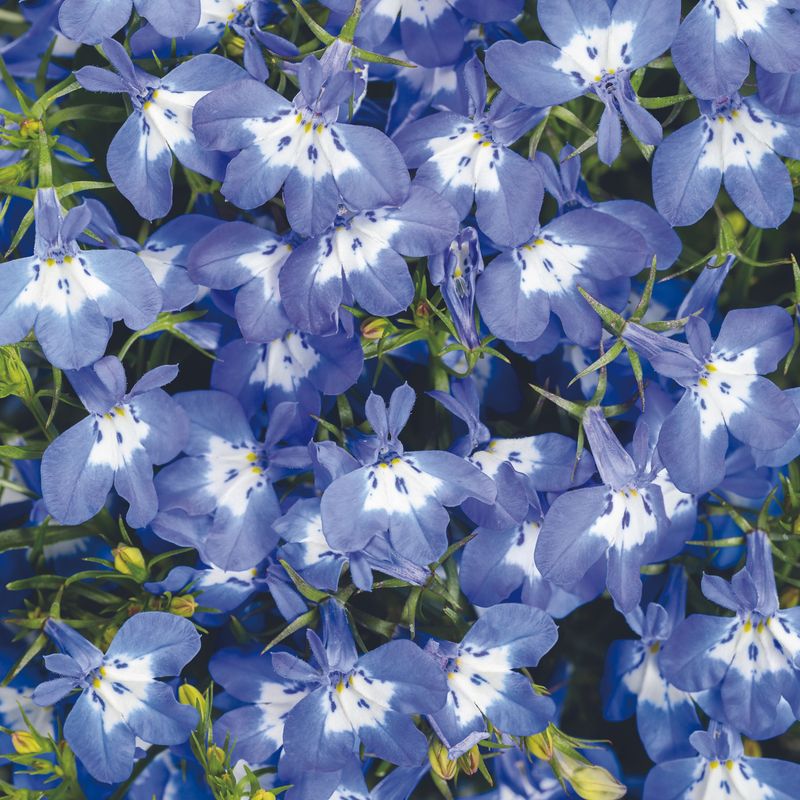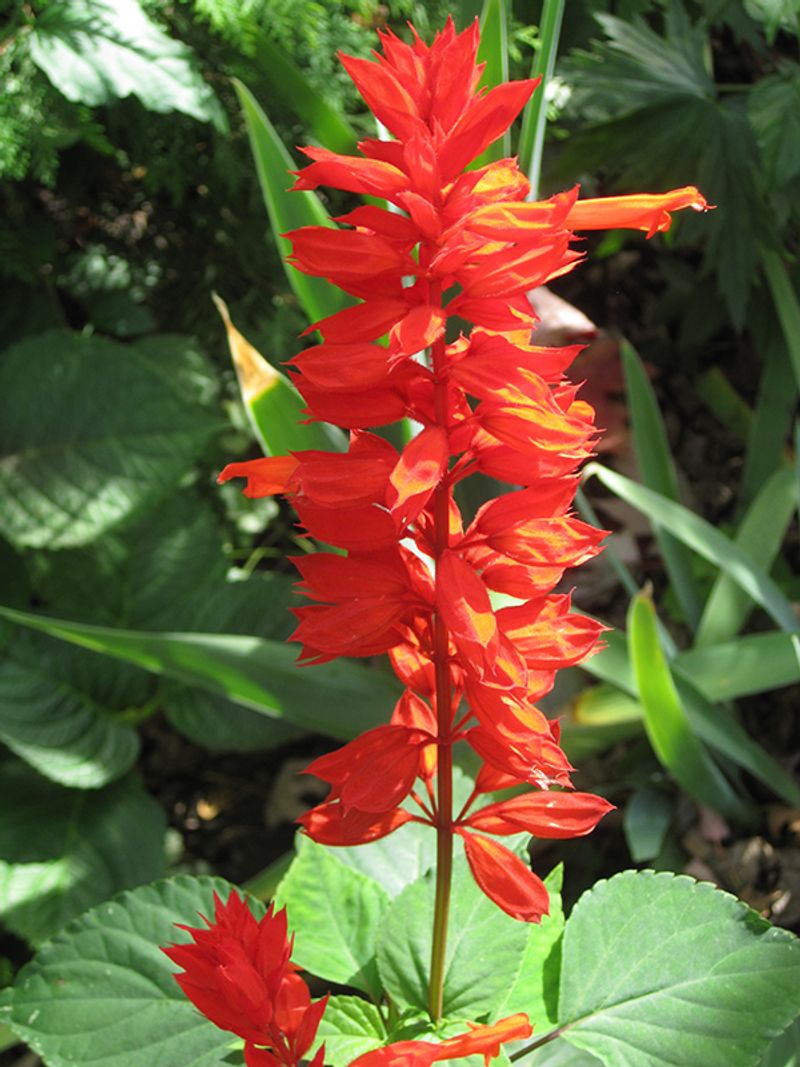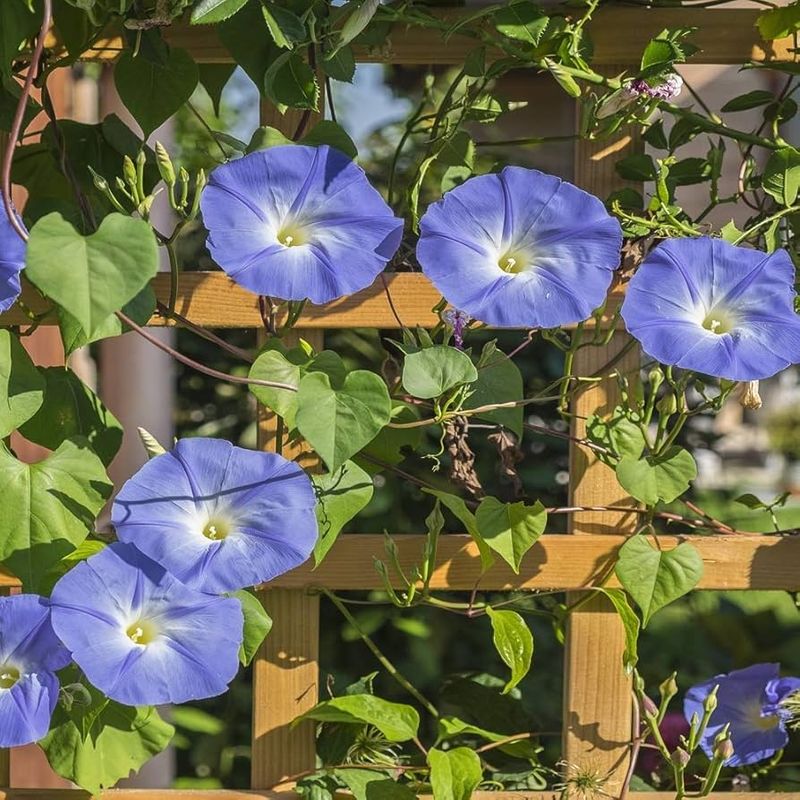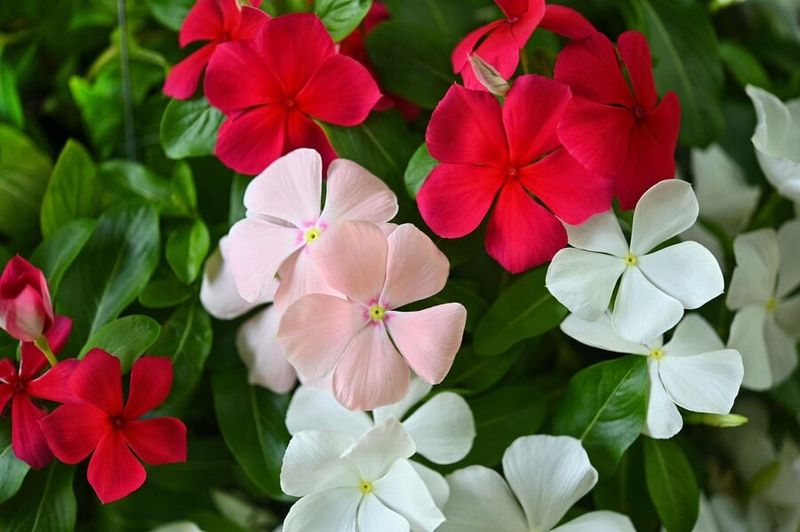Adding colorful annuals to your garden brings instant joy and season-long beauty with minimal effort. These flowering plants complete their entire life cycle in just one growing season, rewarding you with non-stop blooms from spring until frost. Whether you’re a beginner or seasoned gardener, these easy-growing annuals will transform any garden space into a vibrant paradise.
1. Marigolds – Sunshine in Flower Form
Bursting with gold, orange, and yellow hues, marigolds bring cheerful color to gardens while naturally repelling pests. Their distinctive scent keeps harmful insects away from neighboring plants, making them perfect companions for vegetable gardens.
Growing marigolds couldn’t be simpler – just plant in sunny spots after the last frost. The flowers bloom continuously without deadheading, though removing spent blooms encourages more flowers. With minimal water needs once established, these tough beauties thrive even when neglected.
2. Zinnias – Rainbow-Colored Powerhouses
Butterflies flock to zinnias like kids to an ice cream truck! Available in nearly every color except blue, these daisy-like blooms stand tall on sturdy stems, making them perfect for cutting gardens and bouquets.
Sow zinnia seeds directly in the garden after frost danger passes – they sprout quickly and grow rapidly. Heat-loving and drought-tolerant, they’ll bloom non-stop from early summer until frost kills them. For continuous flowers, snip stems for indoor arrangements; the plants respond by producing even more blooms.
3. Petunias – Cascading Color All Season
Spilling from hanging baskets or creating carpets of color in flower beds, petunias deliver non-stop blooms in countless colors and patterns. Modern varieties bounce back after rain, eliminating the soggy mess older types would become.
Plant petunias in full sun for best flowering. Wave petunias spread up to 4 feet wide, making them economical ground covers.
Most varieties perform best with regular feeding – a dilute fertilizer every two weeks keeps them lush. For midseason renewal, trim leggy stems back by half and watch them rebound with fresh growth.
4. Sunflowers – Towering Summer Icons
From dwarf varieties just 12 inches tall to giants reaching 12 feet, sunflowers bring smiles wherever they grow. Beyond the classic yellow, modern varieties offer burgundy, rust, cream, and bicolor options that expand their decorative potential.
Plant sunflower seeds directly in the garden after frost danger passes. Birds love sunflower seeds, so you might need to protect newly planted patches.
The larger varieties need no special care – just plant, water until established, then stand back and watch them reach for the sky. For cut flowers, choose branching types that produce multiple blooms.
5. Cosmos – Delicate Dancers in the Breeze
Graceful and airy, cosmos flowers sway on slender stems above feathery foliage, creating movement and softness in garden borders. Their daisy-like blooms in pink, white, and magenta attract beneficial insects while requiring almost no care.
Cosmos thrive in poor soil – in fact, rich soil produces leggy plants with fewer flowers! Simply scatter seeds in a sunny spot after frost danger passes. No need for fertilizer or fussing; cosmos practically grow themselves.
For a longer bloom season, make two sowings several weeks apart. Drought-tolerant once established, they’re perfect for gardeners who forget to water.
6. Sweet Alyssum – Fragrant Carpet of Tiny Blooms
Creating honey-scented drifts of tiny flowers, sweet alyssum softens garden edges and fills spaces between larger plants. The foam-like masses of white, purple, or pink blossoms attract beneficial insects and pollinators all season long.
Sprinkle alyssum seeds in early spring – they germinate in cool soil before most annuals can be planted. Low-growing and spreading, alyssum excels in borders, containers, and rock gardens.
While it may slow down during summer heat, a light trimming rejuvenates the plants for fall flowering. In mild climates, alyssum often self-seeds gently, returning year after year.
7. Nasturtiums – Edible Beauty for Gardens
Round lily pad-like leaves form a backdrop for nasturtiums’ jewel-toned blooms in fiery oranges, yellows, and reds. Both flowers and leaves are edible with a peppery zip that adds punch to salads.
Plant the large seeds directly in the garden after frost danger passes. Unlike most flowering plants, nasturtiums bloom better in lean soil without fertilizer.
Available in both climbing and bush forms, they’re versatile for containers, beds, or trailing from hanging baskets. Their slightly spicy scent naturally repels many garden pests, making them helpful companion plants.
8. Bachelor’s Buttons – Cottage Garden Classics
Reminiscent of old-fashioned cottage gardens, bachelor’s buttons (cornflowers) produce papery blooms in true-blue, pink, and white that dry beautifully for arrangements. Their informal charm pairs wonderfully with other meadow-style flowers.
Scatter seeds directly in the garden in early spring – they tolerate light frost and cool temperatures. Bachelor’s buttons prefer full sun but adapt to partial shade in hot climates. The plants require minimal care once established and bloom for weeks.
Bees and butterflies love the nectar-rich flowers, while goldfinches and other birds enjoy the seeds if you leave some plants standing after flowering.
9. California Poppies – Golden State Treasures
Silky cup-shaped blooms in sunset hues open in sunshine and close at night, dancing above feathery blue-green foliage. California poppies bring drought-tolerant beauty to gardens with poor or rocky soil where other flowers struggle.
Sow seeds directly where you want them to grow – these natives resent transplanting. The tap roots reach deep for moisture, making established plants remarkably drought-resistant. In mild winter areas, plant in fall for spring blooms; in cold climates, sow in spring.
California poppies often self-seed modestly, returning year after year without becoming invasive.
10. Snapdragons – Vertical Drama on Spires
Children delight in squeezing snapdragon flowers to make them “talk,” but these architectural beauties offer serious garden impact with their tall spikes of dragon-shaped blooms. Modern varieties range from dwarf 6-inch plants to 3-foot giants.
Start snapdragon seeds indoors 8-10 weeks before last frost, as they germinate slowly. They prefer cooler weather, blooming heaviest in spring and fall. During summer heat, trim plants back by a third to encourage fresh growth for autumn flowering.
Snapdragons make excellent cut flowers, lasting over a week in vases. Look for rust-resistant varieties for best performance.
11. Impatiens – Shade Garden Saviors
When other annuals sulk in shade, impatiens shine with non-stop blooms from spring until frost. Traditional varieties carpet shady spots with flowers in white, pink, red, and purple, while New Guinea types offer larger blooms and variegated foliage.
Plant impatiens after all danger of frost has passed – they’re extremely cold-sensitive. Keep soil consistently moist; their succulent stems wilt quickly when dry but recover rapidly with watering.
No deadheading needed – impatiens clean themselves by dropping spent blooms. For containers, use a slow-release fertilizer at planting time for season-long color with minimal maintenance.
12. Celosia – Flame-Like Flowers with Attitude
Resembling flames, feathery plumes, or corrugated brain coral depending on the variety, celosia brings bold texture to gardens. Their saturated colors—scarlet, gold, orange, and burgundy—maintain vibrancy even as they dry on the plant.
Plant celosia in full sun after soil has warmed in late spring. Heat-loving and drought-tolerant once established, they’re perfect for hot summer gardens. The flowers last for weeks, gradually drying in place rather than dropping petals.
Harvest stems for fresh or dried arrangements—they retain their color beautifully when air-dried. Plumed varieties attract butterflies, while crested types make conversation-starting focal points.
13. Sweet Peas – Climbing Vines with Heavenly Fragrance
Gardeners have treasured sweet peas for generations for their incomparable fragrance and delicate ruffled blooms. Growing on twining vines, these cottage garden favorites produce armloads of cut flowers in spring and early summer.
Plant sweet pea seeds directly in the garden in early spring as soon as soil can be worked. Provide support for climbing varieties to reach 6-8 feet tall. Sweet peas love cool weather and fade when summer heat arrives.
For longest bloom time, pick flowers frequently—the more you cut, the more they bloom! Modern varieties come in nearly every color except true yellow or orange.
14. Portulaca (Moss Rose) – Succulent Flowers for Hot Spots
Succulent stems and fleshy leaves help portulaca thrive in blazing heat and poor soil where other flowers fail. The rose-like blooms in tropical colors open in sunshine and close on cloudy days or at night.
Plant portulaca in the hottest, driest parts of your garden after all danger of frost has passed. Perfect for rock gardens, between stepping stones, or as drought-tolerant groundcover.
No deadheading needed—new flowers appear continuously throughout summer. Some varieties drop seeds that sprout the following year, providing welcome surprises. Their water-storing abilities make them nearly impossible to kill by neglect.
15. Ageratum – Fluffy Blue Blooms for Borders
Fuzzy button-like flowers in shades of blue, purple, and white appear in abundance on ageratum plants. Their unique blue color—rare in the flower world—makes them valuable for garden color schemes.
Plant ageratum after danger of frost has passed in spring. Modern varieties stay compact without pinching, blooming continuously until frost. The plants prefer consistent moisture but tolerate brief dry spells once established.
Butterflies love the fluffy flower clusters while deer typically leave them alone. For best performance, choose mildew-resistant varieties, especially in humid climates.
16. Verbena – Long-Blooming Color Clusters
Flat-topped clusters of small, star-shaped flowers cover verbena plants from spring until frost. Available in spreading, mounding, or upright forms, verbenas offer versatility for containers, borders, and hanging baskets.
Plant verbena in full sun after spring frost danger passes. Heat-loving and drought-tolerant once established, verbenas bounce back quickly after wilting. Trim plants back by a third in midsummer if flowering slows—they’ll reward you with fresh growth and renewed blooming.
Butterflies flock to the nectar-rich flowers while the plants remain relatively deer-resistant. Look for mildew-resistant varieties for best performance in humid regions.
17. Lobelia – Cascades of Tiny Blooms
Lobelia creates waterfalls of tiny flowers, most commonly in true-blue but also available in white, purple, and pink. The delicate appearance belies their surprising toughness in cool-weather gardens.
Start lobelia seeds indoors 8-10 weeks before last frost date—they’re slow to germinate. Annual lobelias prefer cooler temperatures and may slow down during summer heat. Plant in morning sun with afternoon shade in warm climates.
Trailing varieties spill beautifully from containers and hanging baskets, while compact types form neat mounds in borders. A light trim if plants become leggy encourages fresh growth and more flowers.
18. Salvia – Spikes of Vibrant Color
Hummingbirds zoom straight to salvia’s tubular flowers clustered on upright spikes. Annual varieties in red, blue, purple, and white bloom non-stop from planting until frost without deadheading.
Plant salvias after danger of frost has passed in spring. Heat and drought-tolerant once established, they’re perfect for hot, sunny spots. Most varieties grow 12-24 inches tall, creating vertical interest in borders and containers.
Their aromatic foliage deters deer and rabbits while attracting beneficial pollinators. Red varieties are especially magnetic to hummingbirds, creating natural feeding stations throughout the garden.
19. Morning Glories – Sky Blue Climbers
Trumpet-shaped blooms in heavenly blue, purple, pink, or white open with the morning sun and close by afternoon on these vigorous climbing vines. Heart-shaped leaves create a beautiful green backdrop for the daily flower show.
Nick or soak morning glory seeds before planting directly in the garden after frost danger passes. Provide sturdy support—vines can climb 6-10 feet in a single season. Morning glories thrive in poor soil; rich soil produces lush leaves but fewer flowers.
The plants bloom abundantly without fertilizer and self-seed readily. In mild climates, consider removing spent flowers to prevent excessive self-seeding.
20. Vinca (Periwinkle) – Heat-Loving Glossy Blooms
Glossy, dark green leaves set off periwinkle flowers in white, pink, red, or purple on these heat-loving plants. Unlike many annuals that fade in summer’s peak, vinca actually performs better as temperatures rise.
Plant vinca after soil has thoroughly warmed in late spring. Patience pays off—they sulk in cool soil but explode with growth once hot weather arrives. Remarkably drought-tolerant once established, vinca rarely needs watering except in containers.
Disease-resistant and deer-resistant, these plants are nearly foolproof in hot, sunny gardens. Modern varieties bloom continuously without deadheading until frost ends their season.


